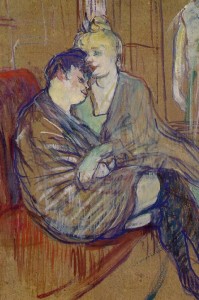
One of the most difficult things an artist on a tight budget experiences is sourcing adequate canvas or watercolour paint to work on. After the essential paints and brushes, canvas – whether canvas paper, canvas board or stretched canvases – is the most expensive item on the kit list. And given that everything that can go wrong probably will go wrong on that canvas, mistakes are expensive.
One answer is to use cardboard or scrap pieces of wood. There are precedents for this: Alfred Wallis, the great St Ives painter, rarely used canvas at all, and L.S.Lowry is rumoured in song to have used cardboard – although Lowry in reality was a more prosperous and complicated man than the legends about him maintain.
But if you were to just grab a slice of cardboard or a piece of wood from a skip and attempted to paint on it in watercolour or oils, with no preparation, then unless you were ready to work with seepage and absorption deliberately as part of the work, and you might of course be willing to do just that, then you’ll need to prepare your material first.
There’s a saving to be made in painting on cardboard compared to using pre-prepared materials – simply get hold of a large tin of acrylic primer and a brush, and treat both sides of your (dry, clean) wood and cardboard several times, drying in between each coat. This will provide you with a suitable surface, furthermore one that is unlikely to warp or suffer too much from damp.
As an artist, you might also want to take advantage of the gonzo nature of painting on cardboard – try incorporating any printing or logo that might be on the cardboard into your work. Or if you are using classic cardboard box cardboard, tear away some of the surface paper to reveal the corrugations underneath and work with the irregular shapes of your remaining surface.
For the real Alfred Wallis feel, try treating wood with real household primer, as if you were going to paint a wall. Or, more traditional gesso is a good alternative if you are looking for a surface ready to take oils.
Works on cardboard or scrap wood are easier than many paintings to hang – you can Macgyver your own hooks and holders on the back.
